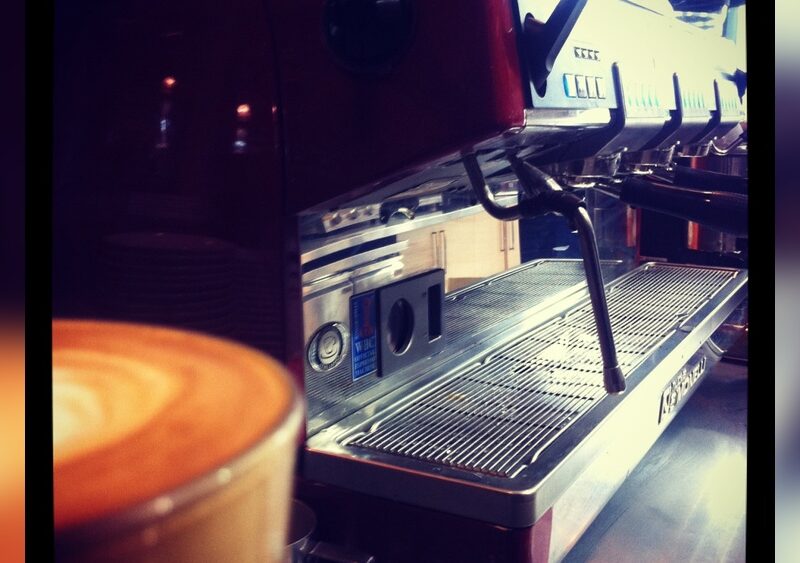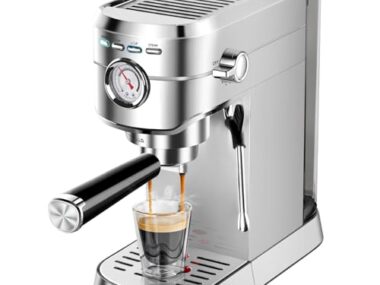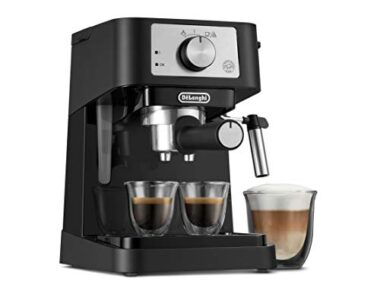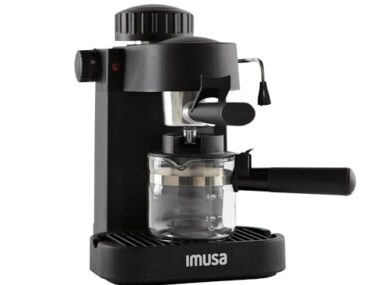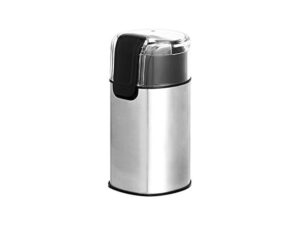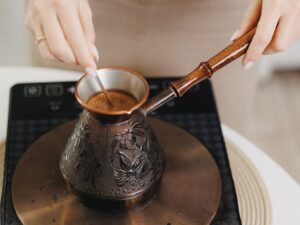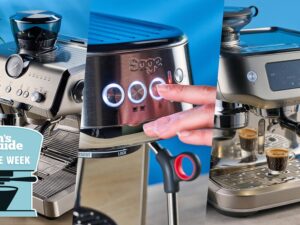Craving that deep, aromatic espresso you get at your favorite café? You don’t need expensive equipment to enjoy it at home. Learning how to make espresso with machine is easier than you think! With a few key steps, you’ll master the perfect shot—rich crema, bold taste, and smooth finish.
You’re not alone. Getting espresso right takes a bit of know-how, but once you master the basics, you’ll enjoy café-quality coffee without leaving your kitchen. In this guide, you’ll discover simple, clear steps to make delicious espresso using your machine.
Ready to impress yourself and anyone you share your coffee with? Let’s dive in and unlock the secrets to perfect espresso at home.
Espresso Machine Essentials
Espresso machines bring café-quality coffee right to your kitchen. Understanding the essentials helps you choose and use the right machine. It also keeps your espresso tasting fresh and rich. This section covers key points to get started with your espresso machine.
Choosing The Right Machine
Start by deciding how often you will use the machine. Small machines suit occasional use and limited space. Larger, more complex machines fit daily heavy use. Consider features like built-in grinders or milk frothers. Budget matters. Find a machine that balances cost and features. Simpler machines offer control but require skill. Automatic machines are easier for beginners.
Machine Components
Know the parts of your espresso machine. The portafilter holds the coffee grounds during brewing. The boiler heats water to the perfect temperature. The pump creates the pressure needed to extract espresso. The steam wand froths milk for lattes and cappuccinos. A water reservoir stores water before brewing. Each part plays a role in making good espresso.
Maintenance Tips
Clean your machine regularly to avoid bad tastes and damage. Rinse the portafilter and baskets after each use. Backflush the machine weekly to remove coffee oils. Descale the boiler monthly if your water is hard. Wipe the steam wand after every use to prevent clogging. Proper care extends your machine’s life and keeps coffee fresh.
Coffee Beans And Grind
Making espresso with a machine starts with choosing the right coffee beans and grind. These two factors affect the flavor, strength, and crema of your espresso. Understanding how to select beans, grind size, and store your coffee helps you brew a rich, balanced shot every time.
Selecting Beans For Espresso
Pick beans that suit espresso’s bold taste. Dark roast beans are popular for espresso. They offer a strong, rich flavor and less acidity. Some prefer medium roasts for more complex flavors. Arabica beans are common for their smooth taste. Robusta beans add more caffeine and crema. Experiment with blends to find what you enjoy most.
Grind Size Importance
Grind size is key for espresso extraction. The grind must be very fine, almost like powdered sugar. Too coarse a grind makes the espresso weak and watery. Too fine can block the machine and cause bitterness. Adjust grind size to control the flow rate and taste. Use a quality burr grinder for even particle size.
Freshness And Storage
Fresh coffee beans deliver the best espresso taste. Beans start to lose flavor soon after roasting. Buy small amounts of freshly roasted beans. Store beans in an airtight container away from light, heat, and moisture. Avoid keeping beans in the fridge or freezer, as this can cause condensation. Grind your beans just before brewing for maximum freshness.
Preparing For The Shot
Preparing for the shot is a key step in making great espresso with a machine. It sets the foundation for the flavor and quality of your espresso. Paying attention to the details before brewing will improve your results. Focus on measuring the coffee, applying the right tamping pressure, and using the proper water temperature and quality. These small actions create a big difference in taste and texture.
Measuring Coffee Grounds
Use a precise scale to measure coffee grounds. The ideal amount is usually 18 to 20 grams for a double shot. Too much or too little coffee changes the strength and flavor. Fresh coffee grounds give the best taste. Measure every time to keep consistency.
Tamping Techniques
Tamping means pressing the coffee grounds evenly in the portafilter. Use a flat tamper that fits well. Apply firm, even pressure around 30 pounds. Press straight down to avoid uneven extraction. A good tamp creates resistance for water to flow slowly. This helps the espresso develop rich flavor and crema.
Water Temperature And Quality
Water temperature should be between 195°F and 205°F (90°C to 96°C). Too hot or too cold water affects taste. Use filtered water for the best results. Hard water can damage your machine and change flavor. Clean water ensures the purest espresso taste and keeps your machine safe.

Credit: roastaroma.com
Pulling The Perfect Shot
Pulling the perfect shot is the heart of making great espresso. It requires attention to detail and control of key factors. Each shot tells a story of your skill and the coffee’s quality. Small changes can make a big difference in flavor and texture.
Understanding the timing, volume, and visual cues helps you craft espresso that tastes balanced and rich. Practice and patience lead to consistently excellent results.
Extracting Time
The ideal extraction time is usually between 25 and 30 seconds. This range allows the water to pass through the coffee evenly. Too fast means under-extraction, which tastes sour and weak. Too slow leads to over-extraction, making the espresso bitter.
Start your shot and watch the clock closely. Adjust your grind size or tamp pressure to keep extraction time steady.
Shot Volume
A standard espresso shot is about 1 ounce (30 ml). For a double shot, aim for 2 ounces (60 ml). Measure the volume to maintain consistency.
Too little volume results in a strong but thin espresso. Too much volume dilutes flavor and weakens the crema.
Use your machine’s settings or a small measuring cup to track the shot size.
Visual And Taste Indicators
Good espresso has a thick, golden crema on top. The crema should be smooth and caramel-colored. It shows proper extraction and freshness.
The espresso should taste balanced. Look for sweetness, a bit of bitterness, and a smooth finish. If it tastes burnt or sour, adjust your grind or extraction time.
Observe the flow: it should start slow, then steady, and stop smoothly. A thin or fast flow signals a problem with your grind or tamp.
Common Issues And Fixes
Making espresso with a machine is rewarding but can present challenges. Common issues often affect the taste and quality of your espresso. Understanding these problems helps you fix them quickly. This section covers typical extraction problems and how to adjust your settings for better results.
Under-extraction Problems
Under-extracted espresso tastes sour and weak. It happens when water passes through coffee too fast. The coffee grind may be too coarse or dose too small. Extraction time might be too short. Fix this by using a finer grind and increasing the dose. Also, check the tamping pressure to ensure even extraction.
Over-extraction Signs
Over-extracted espresso tastes bitter and harsh. This occurs when water flows too slowly or stays too long in the coffee. The grind may be too fine or the dose too large. Extraction time might be too long. To fix, use a coarser grind and reduce the coffee dose. Clean your machine regularly to avoid buildup that slows water flow.
Adjusting Grind And Dose
Grind size and dose directly affect espresso quality. Start with a medium-fine grind. Adjust grind size based on taste and extraction time. Increase dose for stronger espresso but avoid overpacking. Use a scale to measure coffee dose accurately. Small changes in grind or dose can improve flavor significantly. Experiment patiently to find the right balance.

Credit: www.youtube.com
Alternative Espresso Methods
Espresso machines are the classic way to make espresso, but some people do not have access to one. There are other tools and methods to make a strong coffee similar to espresso. These alternatives do not create the exact pressure of an espresso machine but can give a rich and bold coffee experience. They are often affordable and easy to use. Let’s explore some popular methods that make a concentrated coffee shot without an espresso machine.
Using A Moka Pot
The Moka pot is a stovetop coffee maker. It uses steam pressure to push hot water through coffee grounds. This creates a strong and thick coffee. The Moka pot is easy to use and clean. Fill the bottom chamber with water. Add finely ground coffee to the filter basket. Assemble the pot and heat it on the stove. The coffee will collect in the top chamber. It is not true espresso but has a similar bold flavor. The Moka pot is a favorite for many espresso lovers without machines.
Aeropress Espresso Style
The Aeropress is a small, portable coffee maker. It uses air pressure to push water through coffee grounds quickly. This method can produce a rich, espresso-like coffee. Use finely ground coffee for a stronger taste. Add hot water and stir for about 10 seconds. Press the plunger down slowly to extract the coffee. The result is a smooth and concentrated brew. The Aeropress is versatile and simple. It is great for making espresso-style coffee at home or on the go.
Drip Coffee Maker Hacks
Standard drip coffee makers cannot make true espresso. They lack the pressure needed for it. But you can still make a stronger coffee using a few tricks. Use a finer coffee grind than usual. Add more coffee grounds to the filter. Use less water than normal to concentrate the flavor. Brew as usual and enjoy a richer cup. This method will not replace an espresso machine but helps create a bolder coffee. It is an easy way to get closer to espresso taste with what you have.
Enhancing Your Espresso
Enhancing your espresso brings new joy to every cup you make. Small changes can improve taste and appearance. These simple steps turn a plain espresso into a rich and creamy delight. Enjoy learning easy ways to add texture and flavor to your coffee experience.
Steaming Milk Basics
Steaming milk adds creaminess and warmth to your espresso. Use cold milk for best results. Fill the pitcher to one-third with milk. Place the steam wand just below the surface. Turn on the steam and move the pitcher slowly. Heat until the milk reaches 150°F (65°C). Avoid boiling the milk to keep it smooth. Practice makes the texture soft and velvety.
Creating Latte Art
Latte art makes your espresso visually appealing. Pour steamed milk slowly into the espresso. Start from a little height, then get closer as you pour. Use gentle wrist movements to create patterns. Common designs include hearts, rosettas, and tulips. Perfect your technique by watching your milk flow. Latte art adds a personal touch to your coffee.
Experimenting With Flavors
Add flavors to customize your espresso taste. Try vanilla, caramel, or hazelnut syrups in small amounts. Sprinkle cinnamon or cocoa powder on top for extra aroma. Use flavored extracts carefully to not overpower the coffee. Cold milk or cream can balance strong flavors. Experiment with natural ingredients for new tastes. Changing flavors keeps your espresso exciting every time.
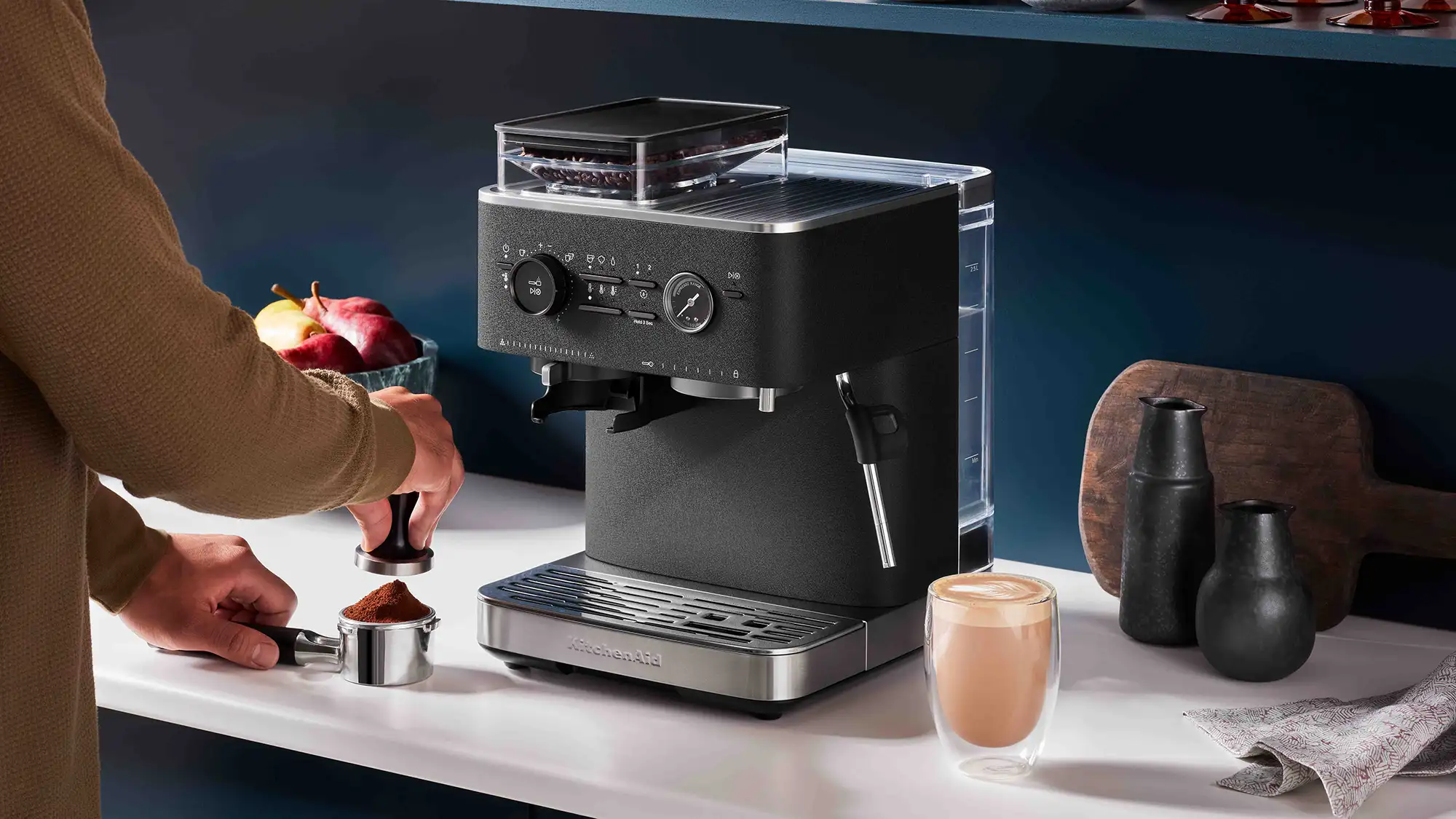
Credit: www.kitchenaid.ie
Frequently Asked Questions
How To Make Espresso With A Coffee Machine?
Use finely ground coffee and fill the portafilter. Tamp firmly, lock it in the machine. Start brewing under high pressure. Extract a 1-ounce shot in 25-30 seconds. Serve immediately for a rich, concentrated espresso. Clean the machine after use.
What Is The 2 1 Rule For Espresso?
The 2:1 rule for espresso means using twice the amount of liquid espresso compared to coffee grounds by weight. For example, 18g grounds yield 36g espresso. This ratio balances strength and flavor for a perfect shot.
How To Make An Espresso Step By Step?
Grind coffee finely. Tamp grounds evenly in portafilter. Lock portafilter into espresso machine. Brew espresso under high pressure for 25-30 seconds. Serve immediately for best flavor.
How Much Coffee Do You Put In An Espresso Machine?
Use 18-20 grams of finely ground coffee for a double espresso shot in your espresso machine. Tamp evenly.
Conclusion
Making espresso with a machine takes practice and patience. Start with fresh coffee beans and the right grind size. Measure your coffee and water carefully. Keep your machine clean for the best taste. Experiment with timing and pressure to suit your taste.
Enjoy the rich, bold flavor of your homemade espresso. With time, your skills will improve, and each cup will taste better. Keep brewing and savor the process.
